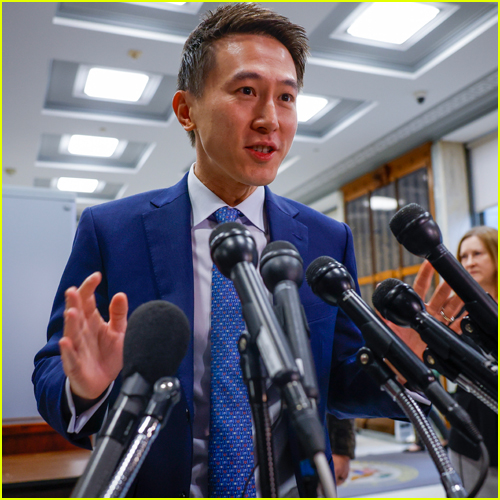Newark Airport Delays: A Deep Dive Into The Staffing Shortage

Table of Contents
The Impact of Staffing Shortages on Airport Operations
Understaffing significantly impacts multiple facets of airport operations, directly contributing to Newark Airport delays.
TSA Security Checkpoints
Understaffing at Transportation Security Administration (TSA) checkpoints is a major culprit. This leads to significantly longer wait times, causing a ripple effect of delays.
- Longer security lines: Passengers face extensive waits, sometimes exceeding an hour, leading to missed flights.
- Increased passenger frustration: Long lines breed stress and frustration, impacting the overall travel experience.
- Potential missed flights: Delays at security can cause passengers to miss their flights, leading to further complications and costs.
- Impact on airline on-time performance: These delays directly affect airline on-time performance metrics, impacting their reputation and profitability.
Ground Handling Crews
Ground handling crews, including baggage handlers and gate agents, play a crucial role in efficient aircraft turnaround. Shortages here cause cascading delays.
- Delayed baggage claims: Insufficient baggage handlers lead to significant delays in baggage processing and retrieval.
- Missed connections: Delayed baggage handling and aircraft turnaround directly contribute to missed connecting flights.
- Longer gate turnaround times: Shortages force planes to remain at the gate longer, disrupting the schedule for subsequent flights.
- Increased flight disruptions: The cumulative effect of these issues contributes to a higher frequency and severity of flight disruptions.
Air Traffic Control
While not solely within Newark's control, air traffic controller shortages contribute to wider airspace congestion, impacting arrival and departure times at EWR and beyond.
- Increased congestion in airspace: Fewer controllers mean less efficient management of air traffic, leading to delays.
- Ripple effect on arrival and departure times: Delays at one airport often cascade to others, creating a domino effect.
- Delays cascading across multiple airports: A bottleneck at one airport due to air traffic control issues can cause delays throughout the network.
Contributing Factors to the Staffing Crisis
The staffing crisis at Newark Airport, and indeed many airports nationwide, stems from a confluence of factors.
Low Wages and Benefits
The aviation industry, particularly in ground handling and security, often offers low wages and benefits compared to similar roles in other sectors. This makes attracting and retaining qualified employees a significant challenge.
- Comparison of wages to similar roles: Salaries are often significantly lower than those for comparable jobs requiring similar skill sets.
- Lack of benefits: Many positions offer limited or no health insurance, retirement plans, or other benefits.
- High turnover rates: Low pay and benefits lead to high turnover, creating a constant need to recruit and train new staff.
Difficult Working Conditions
Airport jobs are often characterized by demanding and stressful conditions, contributing to burnout and high attrition rates.
- Irregular work hours: Shift work, including nights, weekends, and holidays, is common, disrupting work-life balance.
- High-pressure environment: The fast-paced nature of airport operations, coupled with security concerns, creates a highly stressful work environment.
- Physical demands of the job: Many roles involve physically demanding tasks, such as lifting heavy baggage.
Pandemic's Aftermath
The COVID-19 pandemic significantly exacerbated pre-existing staffing issues. Layoffs, furloughs, and a shift in workforce demographics contributed to a severe shortage.
- Impact of travel restrictions: The sharp decline in air travel led to widespread job cuts across the industry.
- Reduced demand: The reduction in passenger numbers resulted in less need for staff, leading to temporary or permanent layoffs.
- Subsequent workforce reductions: Many experienced employees left the industry, choosing not to return after the initial crisis.
Consequences of Newark Airport Delays
The consequences of Newark Airport delays extend far beyond passenger inconvenience, impacting the economy and the environment.
Economic Impact
Delays cause significant economic repercussions, affecting businesses, tourism, and the local economy.
- Lost revenue for airlines: Delays lead to increased operational costs and lost revenue for airlines.
- Missed business opportunities: Business travelers missing connections can lead to lost productivity and missed business opportunities.
- Negative impact on tourism: Delays deter tourists, negatively impacting the local economy reliant on tourism revenue.
- Increased costs for passengers: Passengers face additional expenses due to missed connections, hotel accommodations, and lost productivity.
Passenger Disruption
Newark Airport delays cause immense inconvenience and frustration for passengers.
- Missed flights: Delays can lead to missed connections and necessitate rebooking flights.
- Lost connections: Missed connections result in additional travel time and expenses.
- Hotel accommodations: Passengers may need to book unplanned hotel stays, adding to their costs.
- Emotional stress: The uncertainty and frustration caused by delays are significantly stressful for passengers.
Environmental Concerns
Prolonged taxiing and holding patterns due to delays lead to increased fuel consumption and emissions.
- Increased carbon footprint: Extended idling contributes to higher carbon emissions.
- Negative environmental impact: Increased emissions contribute to air pollution and environmental degradation.
Conclusion
The persistent issue of Newark Airport Delays is significantly linked to the ongoing staffing shortage across various airport operations. Low wages, challenging working conditions, and the lingering effects of the pandemic have all contributed to this crisis. The consequences are far-reaching, impacting the local economy, passenger experience, and the environment. To mitigate future Newark Airport delays, we must advocate for improved working conditions, competitive compensation, and robust recruitment strategies within the aviation industry. Stay informed about Newark Airport news via the FAA website ([link to FAA website]), check your flight status before traveling, and consider supporting initiatives aimed at improving airport worker conditions. Let's work together to address this critical issue and ensure smoother, more efficient travel at Newark Liberty International Airport.

Featured Posts
-
 Obtaining The Fortnite Sabrina Carpenter Skin Release Dates And Strategies
May 06, 2025
Obtaining The Fortnite Sabrina Carpenter Skin Release Dates And Strategies
May 06, 2025 -
 Colman Domingo Elevating Mens Style
May 06, 2025
Colman Domingo Elevating Mens Style
May 06, 2025 -
 Met Gala 2025 Early Guest List Speculation Rachel Zegler Shakira And More
May 06, 2025
Met Gala 2025 Early Guest List Speculation Rachel Zegler Shakira And More
May 06, 2025 -
 Chris Pratts Reaction To Patrick Schwarzeneggers White Lotus Scene
May 06, 2025
Chris Pratts Reaction To Patrick Schwarzeneggers White Lotus Scene
May 06, 2025 -
 Buffetts Apple Investment What We Can Learn About Successful Stock Picking
May 06, 2025
Buffetts Apple Investment What We Can Learn About Successful Stock Picking
May 06, 2025
